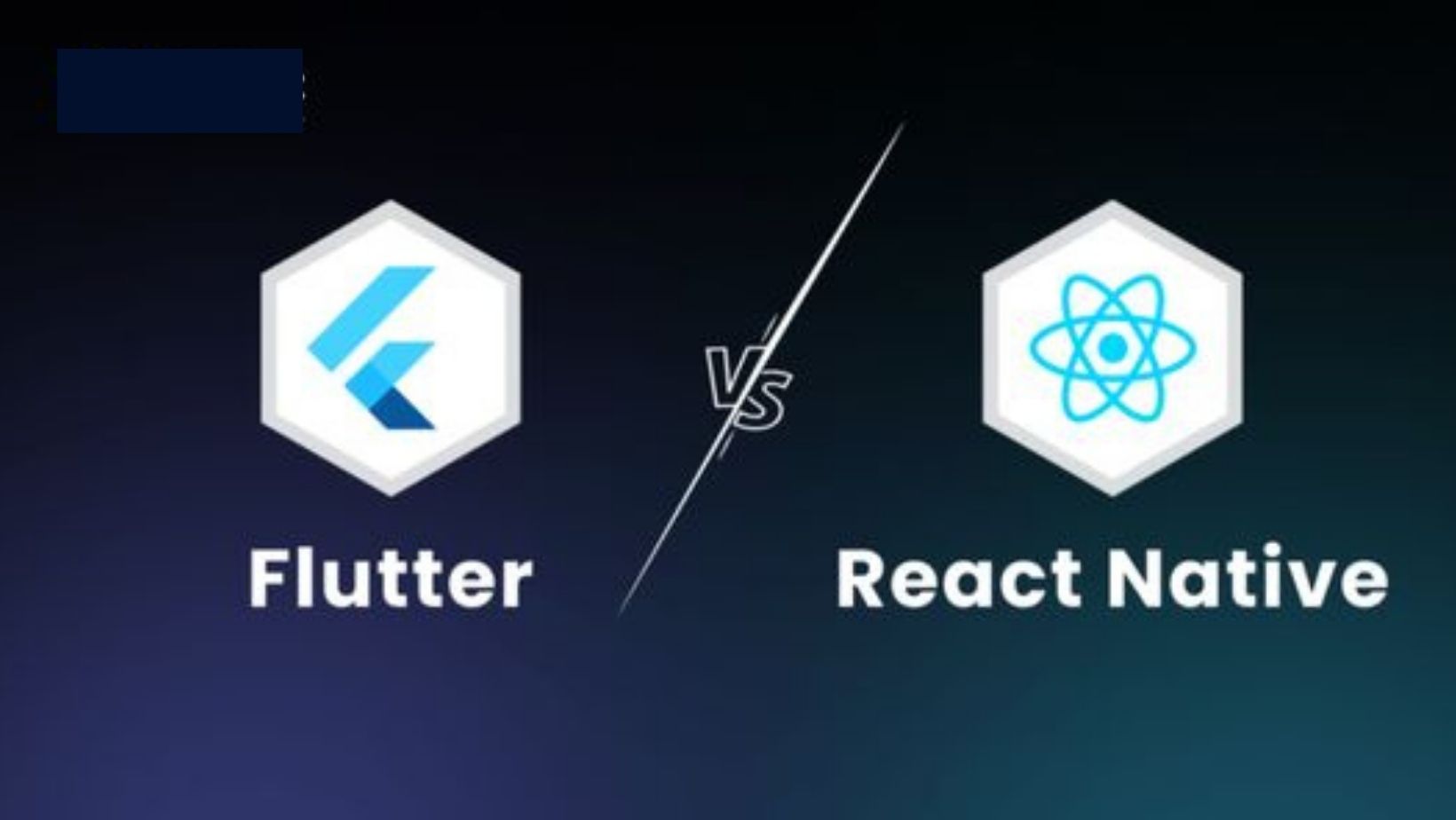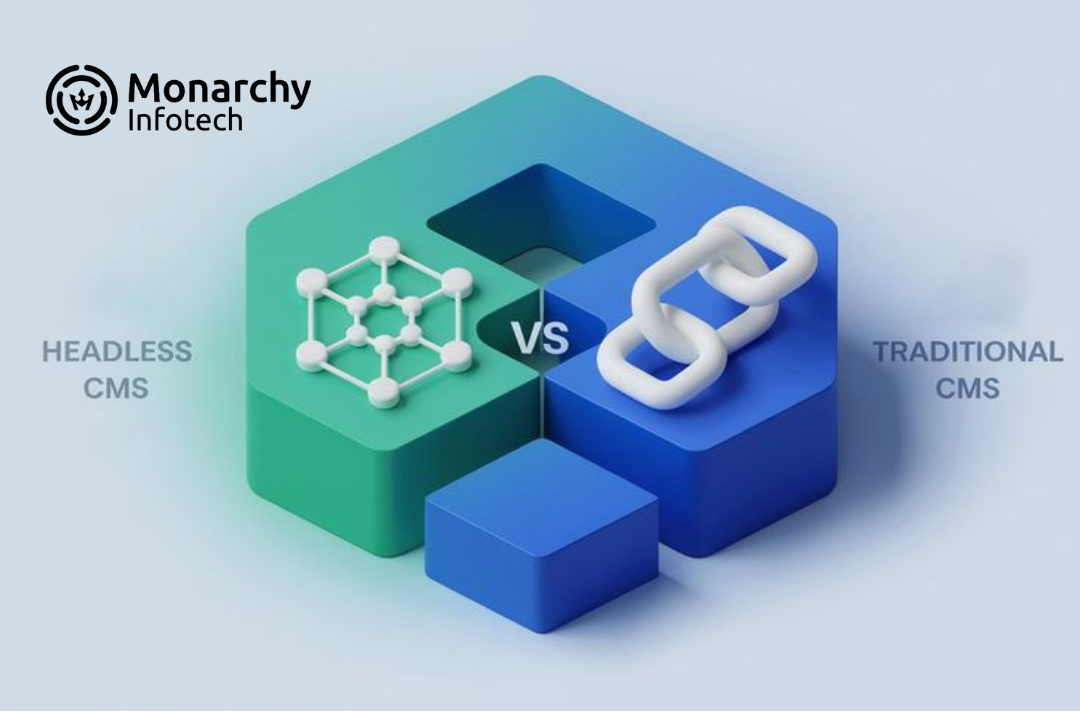Flutter and React Native are two leading tools for cross platform app development that cut development time for iOS and Android devices. Learn about their differences and the best use cases for each.

Flutter Vs. React Native In 2024 — Detailed Analysis
React Native Vs. Flutter In 2024 — Detailed Analysis
Flutter and React Native are two leading tools for cross platform app development that cut development time for iOS and Android devices. Learn about their differences and the best use cases for each.
What Is Flutter?
Flutter is an open-source user interface (UI) software development kit released by Google in 2018. Flutter lets you build cross-platform applications for a number of platforms and operating systems.
What Is React Native?
React Native is a mobile development framework created by Facebook and released in 2015. You can use React Native to develop mobile, web, and desktop apps.
The Biggest Difference Between React Native And Flutter
Flutter renders all components on its own canvas.
React Native transforms JavaScript components into native ones.
Because of that, component updates (to, for example, iOS 16) don’t have any impact on Flutter apps but do on React Native apps.
Depending on where you’re standing, this can be a good or bad thing. For example, if you want your components to stay exactly the way you want them to, Flutter’s approach will satisfy you. But if you want your app to “catch up” with the latest native component designs, then React Native is the way to go — in React Native this update happens automatically and is free. Also, if you don't want your components in a React Native app to follow the new iOS design (because you want to retain the style, for example), you can turn the automatic component update off.
But to include the latest native components in Flutter, you have to update the app manually.
Will Flutter Overtake React Native? [UPDATED 2024]
In the 2023 edition of the Stack Overflow Survey, Flutter still tops React Native, according to developers (all responders).
Most popular technologies within "Other frameworks and libraries" category in 2023's Stack Overflow Survey.
UPDATE, February 2023:
The results of the annual Stack Overflow Survey 2022 showed tight competition in the Flutter vs. React Native debate among developers using these technologies in commercial projects and beyond.
In the latest Stack Overflow survey Flutter received slightly more recognition than React Native in the most popular technology category. Source: Stack Overflow
And a look at Google Trends results reveals a fierce battle between the two is still on.
After gaining on React Native for over two years, in April 2020, Flutter became a more frequently searched query globally and continues to be so in 2023 worldwide.
Worldwide Flutter (red) and React Native (blue) popularity trend (2018–2023). Source: Google Trends
And yet, in the US, the battle still goes on and is as fierce as ever, with axes and gunpowder spoiling the air galore, especially when you look at the trend curve starting from January 2021. However, Flutter currently has a slight lead over React Native.
United States Flutter (red) and React Native (blue) popularity trend (2018–2023). Source: Google Trends
Statista seemed to confirm the global trend in the Flutter vs. React Native battle in 2020. In the survey made with almost 20,000 respondents, Flutter was going head-to-head with React Native.
Cross-platform mobile frameworks used by developers worldwide in 2019 and 2020. Source: Statista
As of May 2021, Flutter was getting closer to overtaking React Native in terms of popularity and usage. But let’s look at the stats.
Flutter is almost on par with React Native in the "Most Popular Technology - Other Frameworks" category in the Stack Overflow Survey 2021.
Interestingly, in 2019, Flutter was almost at the bottom of the popularity contest. So the technology is catching up quite nimbly.
Flutter was near the bottom of the popularity list according to developers participating in the Stack Overflow Survey 2019. Source: Stack Overflow Survey 2019
UPDATE, July 2021:
The latest research from Statista places Flutter as the leading cross-platform mobile development framework in 2021. Flutter surpasses React Native by 4% (42% for Flutter against 38% for React Native). Still, it's fair to say the two technologies are almost equally popular.
Popularity of cross-platform mobile frameworks among developers worldwide from 2019 to 2021. Source: Statista
However, other sources paint a slightly different picture of the overall popularity of Flutter or React Native. Below is a representation of the percent of free mobile apps and games that use a specific engine. Of course, when we take games into account, it's no wonder Flutter and React Native placed lower as they are not exactly the most optimal engines for building games.
Most used engines by mobile app and games developers worldwide (July 2022). Source: Statista
What makes these two technologies so popular? Let's see.
Flutter Vs. React Native: Comparison
Learning Curve
It would seem that React Native’s upper hand over Flutter is that it uses JavaScript — the most popular programming language in the world.
However, JavaScript isn’t necessarily the easiest and most exciting programming language. And just like a carpenter likes her tools to be high-quality, developers enjoy working with programming languages that are fun and convenient to work with — it makes the work that much more pleasant and effective.
So, which one is easier to learn: Flutter or React Native?
From a developer’s perspective, Flutter is easier to learn than React Native.
As we already mentioned, JavaScript is far from being the friendliest programming language out there. You’ve got classes within classes and all sorts of other quirks that sometimes make it difficult for developers to understand the workings of JavaScript, which unnecessarily complicate coding.
Then there’s React Native as a framework itself. It’s not to say React Native is a bad framework — in fact, lots of great apps have it in their stacks. But without being familiar with some nuances, you can waste long hours trying to solve problems when configuring the developer environment.
Flutter is much more developer friendly than React Native. Dart, as a programming language, is easier to work with and understand than JavaScript. Dart is also closer (in paradigms and usage) to programming languages used in native mobile application development.
Because of that the Flutter framework is almost at the top in the “Most Loved Technology — Other Frameworks and Libraries” category in the Stack Overflow Survey 2022.
Results for "Most Loved Technology — Other Frameworks and Libraries” category in the Stack Overflow Survey 2022. The violet color to the right represents the respondents who consider a technology "most dreaded."
Command Line Interface (CLI)
Flutter also has a command line interface (CLI) that ships with tools such as Flutter Doctor, which helps set up your chosen IDE and iOS or Android development. Flutter Doctor looks for tools installed on the local machine and checks their configurations. Flutter CLI paired with Flutter Doctor makes preparing the environment for a new Flutter mobile app a lot smoother.
Setting up React Native calls for a bit more experience. React Native’s getting started guide doesn’t provide as much detail and help to start a project. However, React Native has Expo. Expo is a set of tools that makes it much easier to build React Native apps.
With Expo client, you can view your apps as you build them directly on your mobile phone (no need to go through Android Studio or Xcode). Expo CLI facilitates the creation of new React Native apps by providing tools for development, logs, deployment, iteration, compiling, etc.
Flutter Vs. React Native Performance Comparison
React Native’s architecture requires a JavaScript bridge that enables interaction between JavaScript and native user interface components and device-specific elements (Bluetooth, sensors, camera, etc.). Because of that bridge-based communication, React Native is a bit slower than Flutter. Still, React Native and Flutter, when used in skilled hands, can produce high-performance applications.
UPDATE, December 2023:
JSI (React Native)
React Native now has a new bridge module JSI (JavaScript Interface) that makes React Native faster at component communication. JSI acts as a more efficient bridge between the JavaScript and native layers, allowing for quicker synchronization and smoother performance. This improvement in React Native's architecture contributes to faster app development and more responsive user interfaces, strengthening its position on the cross-platform mobile app development market.
Impeller (Flutter)
Flutter doesn’t rely on a bridge. Up until the middle of 2023, Flutter’s core graphic machine, Skia, was responsible for compiling the UI to native code as the user interacted with the app. Since then, Flutter transitioned to Impeller. Impeller, unlike Skia, is designed to optimize GPU usage, enhancing UI performance and efficiency. This new rendering engine utilizes advanced GPU APIs like Metal and Vulkan, offering more efficient rendering, lower power consumption, and better frame rates. This moves signals Flutter's commitment to leveraging modern hardware for superior app experiences.
Debugging
In React Native, debugging can be problematic, especially when a specific exception or error originates somewhere in the native part of your application. For example, a bug can be on the JavaScript’s side: in React Native or the app’s code. On the native side, bugs can also come from React Native as well as third-party libraries.
But there’s a decent debugger available for React Native — Flipper.
Flipper is a platform for debugging mobile applications. Flipper offers out-of-the-box integration with React Native, JavaScript code, and native code. Source: Flipper
In Flutter, debugging is easier with the aid of tools that support development in Android Studio and Visual Studio. DevTools (known from the Chrome browser) and OEM Debugger make it help developers catch and understand errors. There’s also Inspector, which lets you check the visual layer of the app and why it looks the way it looks.
Flutter Inspector for debugging the visual layer. Source: Flutter
Packages And Libraries
React Native’s ecosystem is huge, much bigger than Flutter’s. This is mainly thanks to the node package manager (npm), a repository of packages. There are over 1.8 million packages hosted on npm.
Npm has been around for ages. And even though it’s mainly geared toward web development (it being the kingdom of JavaScript), a lot of libraries can be easily adapted to React Native apps.
But there’s a caveat with npm — many available JavaScript libraries are low quality and hardly usable in production, so you have to be careful when choosing libraries for your app.
Flutter/Dart’s pub-dev repository is a dynamically growing repository, but one that’s still young and without as many ready-made solutions.
However, when we look for repos on GitHub, a quick search reveals that the ecosystems of both technologies are similar in size.
As of February 2023, Flutter has 487,428 repository results and React Native UI library stands at 355,832. For Flutter, this number has almost doubled as in 2022 there were "only" 241,632 against React Native's 232,168. Still, both ecosystems are rich with packages for animations, state management, and networking.
Maturity
The maturity of a technology is often reflected in wide and positive adoption as well as long-term support. React Native has a lot of high-quality third-party libraries and has been incorporated into tech stacks of major brands.
Flutter is catching up fast, though, and we can say that both technologies have matured enough to be safely used in production.
Documentation
Even though React Native’s been around much longer than Flutter, Flutter’s documentation is more developed, in-depth, and easier to navigate than React Native’s.
For example, in Flutter’s documentation, there are “get started” sections for developers with different technical backgrounds and levels of experience.
Flutter’s “Get started” section. Source: Flutter
So React Native devs looking to start working with Flutter or web developers wanting to learn how to arrange components in a mobile application can easily find what they need.
React Native’s documentation lacks the same level of topical organization and depth.
React Native’s “The Basics” section. Source: React Native
However, there’s a ton of topics on Stack Overflow and Reddit, where developers help each other with many complex problems.
Developer Community
Both Flutter and React Native have flourishing communities around them, with plenty of conferences, hackathons, and events happening annually.
The size of the community and communication channels where you can talk to experts and get help solving your development question can’t be overstated. Both frameworks have rather robust community support channels, where most questions, even those complex, are answered.
Here’s a more detailed comparison of the most popular communication channels for each tool:
Data from February 2023:
Flutter and React Native communication channels and community size comparison for February 2023.
As you can see, Flutter's community is closing a lot more issues on GitHub than React Native's. This is important because bugs can significantly diminish the user experience of an app, and when the issue isn't solved for long, the bug persists.
Integrated Development Environment (IDE)
You can write mobile apps in a good ol’ notepad if you want to. But it’s a lot more pleasant and efficient to develop in a dedicated integrated development environment (IDE), with built-in debuggers, code editors, build automation tools, compiler, and other handy development tools.
Flutter lets developers choose their IDE, e.g., Android Studio or Visual Studio. In React Native, you can use Visual Studio or WebStorm, for example.
For developers who have some experience with native Android development working in Flutter might feel easier because they will be familiar with Android Studio, which is very developer friendly.
Cross-Platform Capacity
React Native lets devs build apps for iOS and Android, and the web via React. Recently, Microsoft has unveiled a great project where desktop apps can be written in React Native (for both macOS and Windows).
With React Native version 0.71 (which initially had some troubles), the team is focusing on improving the cross-platform developer experience with TypeScript by default, new architecture updates, and layout management via Flexbox Gap. This release also delivers web-inspired props for styles and accessibility to align RN's API across platforms. Thanks to its compatibility with numerous plugins and third-party libraries, React Native simplifies the development of cross-platform applications, allowing developers to integrate different functionalities quickly.
With Flutter, you can develop apps for web, macOS, Windows, Linux, Android, iOS, and embedded systems (e.g., infotainment systems in cars).
Flutter 3 came with a promise of a truly cross-platform development capability, with the SDK letting developers share code between all compatible platforms. In fact, Flutter 4 will be focusing on desktop app development. On the other hand, Flutter's latest release, Flutter 3.7, boosts performance with a new rendering engine on iOS and background processing improvements, among other updates to developer tooling and internationalization and Material 3 support.
Hot Reload Feature
Hot reload is an ultra-convenient feature for developers that lets devs reload the app and look up changes in the UI.
React Native’s counterpart of hot reload is Fast Refresh, which basically does the same thing as Flutter’s Hot Reload.
The downside of either version of the feature is that advanced changes in the code (e.g., changing a stateless widget to a state Full widget) can’t be hot reloaded. Complex changes require app recompilation.
Programming Language
Dart programming language is very similar to Java/Kotlin (Android), which makes it easier to learn for devs coming from native mobile development. JavaScript is less intuitive and thus more difficult to master. Both frameworks support native module development for platform-specific features.
Material Design
Flutter has built-in support for Material Design. It is integrated directly into the framework, offering a rich set of Material Design widgets out of the box. This means developers can easily implement Material Design principles and components in their apps with minimal effort. Flutter's Material widgets are designed to adhere closely to Google's Material Design guidelines, making it straightforward to create visually appealing and functionally rich apps with a consistent look and feel across
platforms.
React Native does not include built-in Material Design components, but it can utilize Material Design through third-party libraries. One popular library is react-native-paper, which provides a wide range of Material Design components that are compatible with React Native. Using such libraries, developers can implement Material Design in their React Native apps, although it requires an additional step of integrating and maintaining these external dependencies.
Who Is Using Flutter?
Flutter is present in the tech stacks of companies such as:
Alibaba
BMW
eBay
Square
Groupon
CapitalOne
Who Is Using React Native?
React Native powers a number of globally renowned brands:
Uber Eats
Skype
Tesla
Coinbase
Salesforce
Benefits Of Using Flutter And React Native Vs. Native Development
Extremely fast prototyping of apps that don’t require the newest native features.
Native development in Swift (Apple iOS) or Kotlin (Android) is longer and more expensive (need for two teams, each per platform). React Native and Flutter can support startups in building prototypes and MPVs quickly.
Hot reloading, included in React Native and Flutter, gives developers quick feedback about the changes in the layout — whenever you change something, you can check how it’ll look like in the app without having to recompile the app. This greatly speeds up the development process.
Note: Hot reload is also supported by native Android and iOS, but the functionality is limited compared to that of React Native and Flutter.
Drawbacks Of Using React Native Or Flutter Vs. Native App Development
While both React Native and Flutter are great tools for building mobile apps quickly, there's a slight overhead when adjusting cross-platform apps to OS updates (either iOS or Android). Native apps are updated automatically.
With native app development, achieving great app performance is easier. Although the difference in performance is becoming less noticeable in iOS and Android apps built in Flutter or React Native.
Also, implementing pixel-perfect designs in native apps is simpler. However, this requires you to do the implementation for both platforms separately, which adds time and cost to development.
On a side note, Flutter’s components (e.g., buttons or textField) are highly configurable, which lets you tweak the design and achieve pixel-perfectness too.
Some new features available on iOS and Android natively are much easier to implement in native apps.
Learn more about how native mobile app development compares to cross-platform development.
Verdict: Is React Native Better Than Flutter?
For a long time, CTOs asked why React Native is better than Flutter, but the parameters of that question have shifted a while ago. In skilled hands, both React Native and Flutter can be used to build great apps with close-to-native performance and feel. However, Flutter has been increasingly used more by businesses and professional developers, and this trend is continuing globally.
Still, when choosing either technology, you’ve got to look at it from a wider perspective than just popularity or technical benefits and drawbacks.
For example, after outsourcing development, will you be able to complete a team of Flutter devs to maintain and evolve your app?
Flutter’s gentle learning curve is an invaluable asset — when you need developers to jump into a project fast, Flutter’s documentation paired with relatively easy Dart will definitely help.
But don’t forget that Dart is not a very popular programming language compared to the ultra-popular JavaScript in React Native. Therefore, skilled Flutter devs might be difficult to get hold of.
Also, there's the matter of the ecosystem itself. With Flutter, you have many Google SDKs (e.g, Google Ads SDK for mobile) developed officially.
Developer Availability For Flutter And React Native Projects
The demand for React Native is as high as is the supply, but it's not necessarily the case with Flutter. Hiring problems are plaguing companies who choose Flutter but then struggle to retain talent that will work on the app and deliver quality code.
A look at job postings for Flutter and React Native developers (with a remote option). Data from June 2022.
Best Use Cases For Flutter And React Native
React Native and Flutter are great for fast prototyping and simple mobile apps. However, when building enterprise-grade mobile applications where pixel-perfect designs, top-of-the-top performance, and instant implementation of native functionalities are key requirements, then native development might be a better choice.
That's not to say Flutter or React Native can't be successfully used in large and complex applications. But you need to be aware that both technologies can generate overhead in the long run.
For example, in 2019 Airbnb migrated from React Native to native development due to the volatility of React Native's ecosystem, difficulty to recreate bugs, and the need to write bridges for platform-specific functionalities.
Always look at the technology you want to include in your tech stack from a broad and long-term perspective where tradeoffs and benefits are thoroughly cross-analyzed.
When To Use Flutter
Flutter will work well when:
You have a smaller budget (no need to have two teams for native Android and iOS development)
You need to release your product fast (short deadline)
You want to have pixel-perfect designs and components that create a great UI
You need to build a cross-platform experience for your users (desktop, mobile, car infotainment)
When To Use React Native
Use React Native when:
You have a desktop app or website and can reuse components for a mobile app (have a single tech stack)
You have a team of JavaScript familiar with your existing assets who can use the plug-ins, modules, and widgets from the huge npm repository
You’re pressed for time to find a team of React Native developers (Flutter developers are currently harder to find)
Frequently Asked Questions
Is Flutter Faster Than React Native?
Following the changes in React Native's architecture (JSI), React Native has been getting closer to Flutter in terms of performance. But a Flutter app can still be slightly faster than a React Native's (of course, that doesn't necessarily have to be a problem and it depends on the type of your product and the job it does).
Is Flutter Better Than React Native?
Flutter has been gradually winning the React Native vs Flutter popularity race for a while now, and that's because it's considered easier to work with. Also, issues reported on Flutter's GitHub have a lot more solutions than those of React Native.
However, there's a scarcity of Flutter developers on the market, which is a considerable drawback. So while there are many advantages of Flutter over React Native, it's difficult to answer which technology is better for developing close-to-native mobile apps.
Is Flutter Ready For Production In 2024?
Flutter became production ready a long time ago. In fact, the tool lets developers build desktop, mobile, and web apps from a single codebase in Flutter.
Flutter Is Native Or Hybrid?
Flutter is an SDK for the development of hybrid or cross-platform mobile applications with native UI components.
Does Flutter Work With AI?
Yes, Flutter works with AI and can help developers introduce custom features that respond and react to user queries in real-time. In fact, we've developed an open source Mistral AI API client for Flutter, which you can find here. Plus, we have a comprehensive, step-by-step guide showing how to implement AI in four different use cases on mobile apps.






